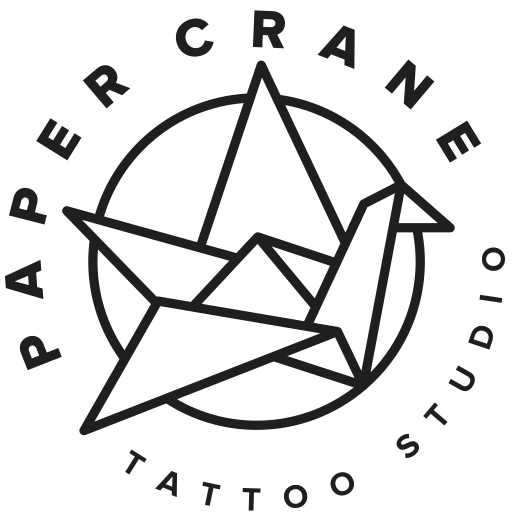Know Your Tattoo Needles: A Basic Guide

We've found that clients fall into two main groups when getting tattooed: the ones who stare down the tattoo machine, watching the needle pierce their skin hundreds (if not thousands) of times—and the ones who keep their eyes firmly fixed on the wall, floor, or ceiling, stealing maybe a peek or two (and clearly regretting it by how quickly they turn away).If you're in that first group, then you'll love today's blog: We're breaking down some of the different types of needles your artist might use to tattoo you, so next time you get inked you'll have a better understanding of the tools of the trade. And if you're squeamish about the process, it's our hope that a little knowledge will take some of the fear out of your next session!
Tattoo Needle = Needles
Unless you're getting a single-needle tattoo specifically, the tattoo “needle” your artist is wielding is actually multiple needles soldered together. Just how many needles are we talking about, you ask? It depends on what your artist is up to: For blending color, your tattooist might choose a stacked magnum with eleven needles grouped tightly together, then for outlining s/he might switch to a round liner with just three needles. (Don't worry—we'll explain what stacked magnums and round liners are below!)As for those single-needle tattoos, you can get hand-poked or machine-tattooed with these by an artist with a steady hand. The end results can be super fine and elegant, with ethereal strokes that look almost hand-drawn. Some artists use them for tiny tattoos, whereas others appreciate the single-needle aesthetic and incorporate it into their work regardless of size.
Liners, Shaders, and Magnums—Oh My!
There's an endless variety when it comes to tattoo needles, especially considering that a number of artists make some or all of their needles by hand. (We use pre-manufactured disposable needles when we tattoo, but Mikey Vigilante knows how to make tattooing needles and likes to share that craft with our artists.) For now, we're going to look at some of the main varieties you might find your artist using:Round Needles: Soldered together around a central shaft, round needles look exactly like their name implies. They can be used as liners, in which case they are called round liners, or as shaders, in which case they're called—you guessed it!—round shaders. You can commonly find round needles with anywhere from three to eighteen needles. Depending on how loosely or tightly the needles are grouped and the desired result, your artist can use round needles for basic shading, small details, or bold outlines.Flat Needles: As you might have figured, flat needles are soldered together in a straight line. This configuration is often used for textural effects, like doing fine strands of hair or giving a tattoo a "brushed" look. Similar to round needles, the actual number of needles varies greatly, but between six and ten is standard.Magnum Needles: When it comes to shading or filling in large areas of color, magnum needles get the job done. Why is that? Magnums are by design flat configurations with every other needle woven and slightly separated from the adjacent needle. This extra space between the individual needles means magnum needles deliver a lot of ink in one go, which in turn means your artist doesn't have to pass over your already-tender skin as many times as with other needles. Magnums come in an ever-growing variety, including single stack (one row of needles), weaved (two loosely-grouped rows of needles), and soft edged (which are slightly rounded on the end and used for smooth gradients or black-and-grey). If you're wondering what separates a single stack magnum from a flat needle or a round magnum from a regular round liner, it's largely the way the needles are grouped and configured. Some artists feel magnum varieties are more flexible, cause less damage, and/or deliver smoother ink flow. You can easily find magnums with anywhere from five to forty-nine needles. And if that second number sounds intimidating, here's an interesting observation: The more needles you're being tattooed with, the less pain you tend to feel! That's why a little round liner can feel like you're getting nicked with a razor, whereas a larger magnum grouping creates more of a dull burn.
A Sterile Setup for Professional Tattooing
A reputable artist will have the right tools for the job, which includes the proper gear for his/her individual needs. For example, if your artist uses a machine that requires needle cartridges as opposed to a standard setup, s/he'll have that all ready to go. Or if your artist is using bugpins (a type of magnum made with extremely thin needles), s/he'll have the smaller tubes needed for this setup.Most importantly, though, regardless of what needles or devices your artist implements, a professional artist will have a totally sterile setup. That means disposable, single-use needles so as to avoid the transmission of blood-borne pathogens between clients; autoclaves to sterilize any non-disposable equipment; ink cups that artists fill with ink from larger bottles and throw away after each session; and a number of behind-the-scenes protocols that ensure your comfort and safety.Remember, if you're ever in doubt or just want to put your mind at ease, you can always ask your artist to explain their setup. Whether you want to know more about the kinds of needles being used or the safety precautions in place, a reliable artist will have no problem giving you detailed information.
If you want to delve deeper into the world of tattoo needles, stay tuned! We'll be sitting down with one of our artists soon to get into more detail about what a weaved magnum is used for, why some tattooists prefer a Cheyene Hawk Pen or a Mickey Sharpe T-Dial, and why it's called a bugpin when we're not entomologists.
If you've got questions in the meantime, drop us a line at info@papercranetattoo.com!

